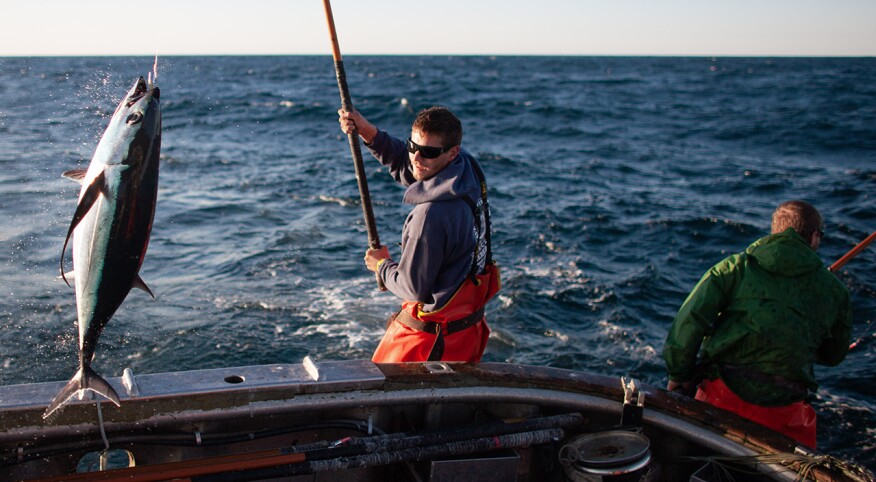Like many Gen Xers, I was raised by imaginary friends trying to sell me stuff.
Snap, Crackle, Pop, Tony and the good Cap’n (Crunch) convinced me dessert could be breakfast, a king of nowhere and a clown without a circus pushed burgers, while an assorted band of ephemerals hawked snacks and drinks. The job of selling seafood, though, fell on the fins of one tortured creation who managed to change my life.
I’m talking about, of course, Charlie the Tuna.
Starkist’s mascot, now mostly forgotten, was once one of the most recognized characters on television. How did it happen? Was it Charlie’s sophisticated pursuits, from fine wine to modern art? Was it that he was kind of, um, ethnic — an unwanted interloper with a New York accent trying to get between the exclusive sheets of the WASP country club’s white bread? Maybe.
Or perhaps it was the unsolvable koan of contradiction he planted in the American mind. Unlike real fish, Charlie didn’t strive to escape humanity’s rapacious grasp. Charlie wanted to be caught, killed and eaten.
“Sorry, Charlie,” the world above would always reply. We won’t even take a bite.
Our generation was pitched all sorts of “ideas” about the environment. Another major commercial character during Gen X’s TV education was a crying Native American, who convinced us it was our fault the world was getting so filthy. (The spot was created by something called The Ad Council and sponsored by a consortium of soda can and packaging manufacturers trying to fend off recycling legislation.)
But Charlie did Iron Eyes Cody one better. He unwittingly exposed an atrocity in progress. Just as his ads were hitting the air waves, human exploitation of our oceans was reaching its maximum — nearly a hundred million tons of wildlife, the human weight of China, was being removed from the seas annually.
Along with tuna, 7 million dolphins got tangled up and asphyxiated in commercial fishing nets during Charlie’s long run. Fishermen knew that tuna and dolphins often school in proximity to one another. When dolphins surface to breathe, they give away a tuna school’s location. And so fishermen knew that if they set nets around dolphins, they’d catch tuna.
As all this was going on, Charlie never relented in his messaging. All he ever said was, “Eat me. Please.”
This kind of double-crossing would eventually lead me to become an environmental reporter. I wrote a trilogy of books about the ways in which we were deceived or let ourselves be deluded by the corporate seafood industry.
In my research, I learned that a fifth of the world’s mangrove forests have been destroyed to make room for shrimp farms. I learned that more than 10 million tons of wild little fish are ground into pellets to feed farmed salmon every year. That thousands of stateless humans were being impressed into sea slavery just to keep fish cheap.
Even the “dolphin-safe” reboot of canned tuna has been reopened for investigation. Bumble Bee, Nestle Purina PetCare and, yes, Starkist, are all now listed as defendants in an ongoing class action lawsuit that asserts the dolphin-safe labeled tuna isn’t really safe for dolphins.
The good news is that it didn’t just lead to more Ad Council crocodile tears. In response to the dolphin debacle, an entirely new sector of the tuna industry arose in the last two decades. “Pole-caught” tuna are captured one at a time, usually by small-scale fishers with almost no bycatch. Pole-catching also tends to select for smaller fish, which have lower methylmercury levels.
Pole-caught tuna isn’t going to save the seas all by itself. We owe a much bigger rethink on how we treat our oceans and a giant “Sorry, Charlie” to all the fish and marine mammals we’ve hurt with our greed.
The first step in making that apology stick is to have the good taste to always choose the more sustainable option.

Fred Greaves
Follow Article Topics: Eating-&-Drinking




